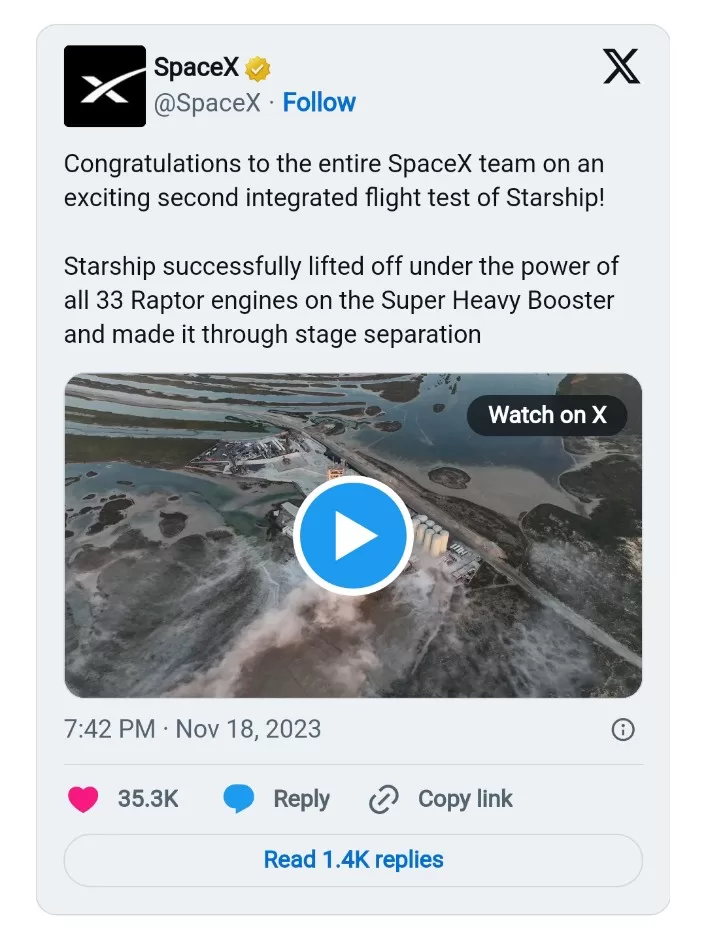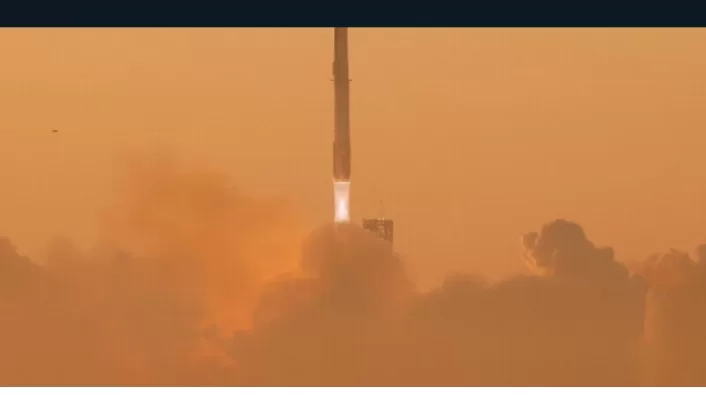Elon Musk’s aerospace company, SpaceX, encountered a setback in its ambitious quest for interplanetary travel as the uncrewed Starship spacecraft, designed for lunar missions and beyond, faced complications during its second test flight. The two-stage rocket, launching from the Starbase site near Boca Chica, Texas, reached an altitude of approximately 55 miles before encountering issues.
The Super Heavy first stage booster, seemingly successful in separating from the core stage, suffered a catastrophic explosion over the Gulf of Mexico shortly after detachment. Subsequently, SpaceX’s mission control lost contact with the core Starship booster as it ascended further into space, leaving the fate of the vehicle uncertain.

Around eight minutes into the mission, a camera view indicated an explosion in the Starship booster, suggesting a critical failure at an altitude of 91 miles. This launch followed a failed attempt in April, where the rocket experienced difficulties four minutes after liftoff.
Despite the challenges, SpaceX emphasized the importance of learning from such tests to enhance Starship’s reliability. The company stated that the core Starship stage’s engines fired for several minutes on its journey into space, highlighting the value of the data obtained.
The mission aimed to launch Starship into space, just short of orbit, with plans for a controlled descent through Earth’s atmosphere for a splashdown off Hawaii’s coast. Originally scheduled for Friday, the launch was delayed by a day for last-minute flight-control hardware adjustments.
Success in this test would have been a significant stride toward SpaceX’s goal of creating a versatile spacecraft for NASA’s lunar missions and eventual Mars exploration. Elon Musk envisions Starship replacing the Falcon 9 rocket as SpaceX’s primary launch vehicle for satellites and other payloads.
NASA, a key client for SpaceX, is banking on the success of Starship for its Artemis human spaceflight program, aiming to follow up on the historic Apollo missions that landed astronauts on the moon over half a century ago. The setback during the April flight was attributed to malfunctions in some of the Super Heavy’s 33 Raptor engines and the failure of the lower-stage booster rocket to separate as intended.
By Reuters




